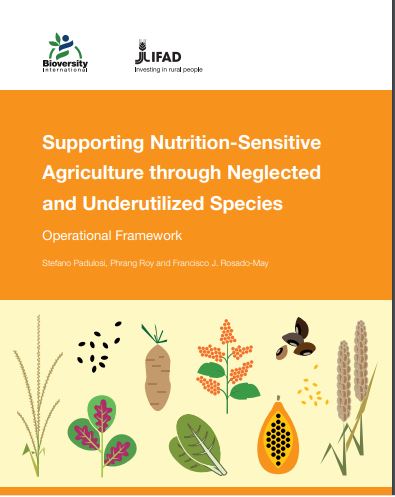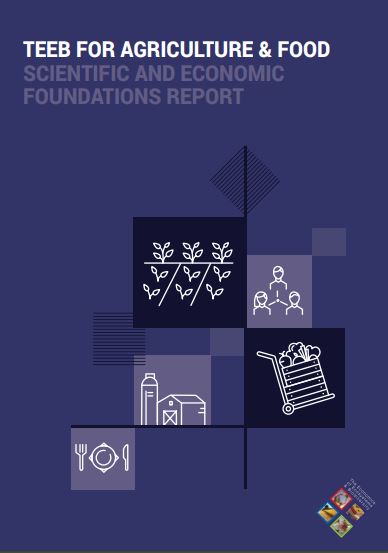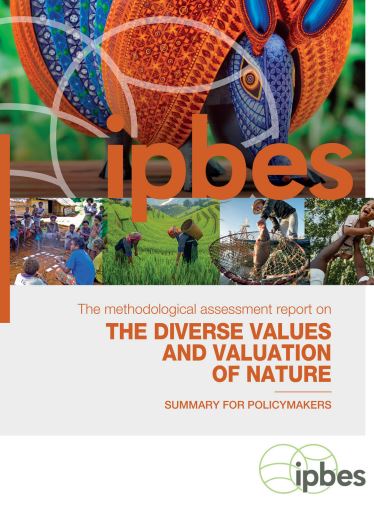Reports

Supporting Nutrition Sensitive Agriculture through Neglected and Underutilized Species: Operational Framework.
2019
Author(s): Padulosi S, Phrang R, Rosado-May F.J.
The purpose of this Operational Framework is to support Country Directors, CPMs and ICOs to integrate NUS and Indigenous Peoples issues into the Loans and support the implementation of IFAD Nutrition Sensitive Agriculture Action Plan 2016-1823 and capacity building efforts in that direction.

TEEB for agriculture & food: scientific and economic foundations
2018
Author(s): The Economics of Ecosystems and Biodiversity (TEEB) Office, UN Environment
The TEEBAgriFood ‘Scientific and Economic Foundations’ report addresses the core theoretical issues and controversies underpinning the evaluation of the nexus between the agri-food sector, biodiversity and ecosystem services and externalities including human health impacts from agriculture on a global scale. It argues the need for a 'systems thinking' approach, draws out issues related to health, nutrition, equity and livelihoods, presents a Framework for evaluation and describes how it can be applied, and identifies theories and pathways for transformational change.

Summary for Policymakers of the Methodological Assessment Regarding the Diverse Conceptualization of Multiple Values of Nature and Its Benefits, Including Biodiversity and Ecosystem Functions and Services
2022
Author(s): Intergovernmental Science-Policy Platform on Biodiversity and Ecosystem Services
The values assessment provides guidelines, criteria, tools and a road map to navigate the ways in which values play out in decisions, as well as the role values and valuation can have in achieving more sustainable pathways. It should be noted that the assessment does not provide quantifications.
Supporting Nutrition-Sensitive Agriculture through Neglected and Underutilized Species: Operational Framework
2019
Author(s): Padulosi S, Roy P, Francisco JRM
Agrobiodiversity is a resource that supports human and environmental wellbeing. IFAD’s support for the better use of agrobiodiversity with specific reference to neglected and underutilized species (NUS) and a greater recognition of the traditional knowledge of Indigenous Peoples associated with the use of NUS and wild edibles are important for fighting food and nutrition insecurity, especially in the context of climate change. Both factors have the potential to promote and enhance a sustainable and nutrition-sensitive agriculture (NSA) and associated livelihood outcomes.
The Traditional Knowledge Advantage: Indigenous Peoples’ Knowledge in Climate Change Adaptation and Mitigation Strategies
2016
Author(s): Chianese F
The study highlights that indigenous peoples’ knowledge can provide important insights into the processes of observation, adaptation and mitigation of climate change consequences.
A People’s Biodiversity Register (PBR) of village Sükhai, Zünheboto, Nagaland
2015
Author(s): The Energy and Resources Institute
The objectives of this study which are in tandem with those specified by the National Biodversity Authority are to develop and maintain an inventory of known biological resources, and to document the traditional knowledge associated with biodiversity in Sükhai.

Globally Important Agricultural Heritage Systems (GIAHS). Combining agricultural biodiversity, resilient ecosystems, traditional farming practices and cultural identity
2018
Author(s): Food and Agriculture Organization of the United Nations
The report summarises GIAHS Programme initiated by FAO through multi-stakeholder support, this approach aims to: provide technical assistance; boost understanding of the value of keeping alive sustainable agricultural knowledge; and promote agricultural products, agro-tourism and other incentive mechanisms and market opportunities.
Science Technology Plan for Disaster Risk Reduction: Asian and Pacific Perspectives
2013
Author(s): Shaw R, Lu L, Lian F
This report illustrates the science and technology plan for disaster risk reduction from the 12 countries in Asia. It consists of two parts: Science Technology Plan for DRR and Country Report.

Protected planet report 2016: how protected areas contribute to achieving global targets for biodiversity
2016
Author(s): Bhola N, Juffe-Bignoli D, Burgess N, Sandwith T, Kingston N
The Protected Planet Report 2016 assesses how protected areas contribute to achieving the Aichi Biodiversity Targets and relevant targets of the Sustainable Development Goals, and highlights current research and case studies as examples of the role protected areas play in conserving biodiversity and cultural heritage.

Framework for Integrated Ecosystem Management in the Hindu Kush Himalaya
2017
Author(s): Yi S, Rawat GS, Wu N, Bubb P, Chettri N, Kotru R, Sharma E, Bhatta LD, Bisht N, Aryal K, Gurung J, Joshi S, Adhikari BS, Rawal RS, Ghate R, Gurung K, Goodrich C G, Chitale VS, Shakya B, Ismail M, Chaudhary RP, Yan Z, Wang J
The report provides basic background, principles and key terms for ecosystem management, major considerations in the context of the HKH and the process and practical steps required for the management of ecosystems.



